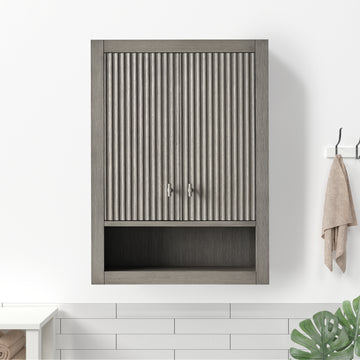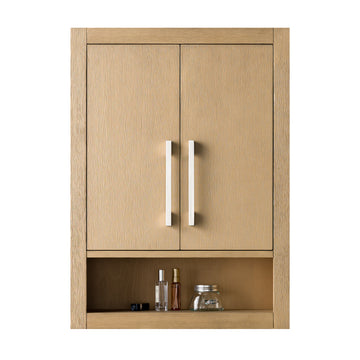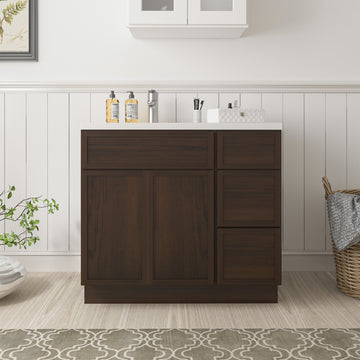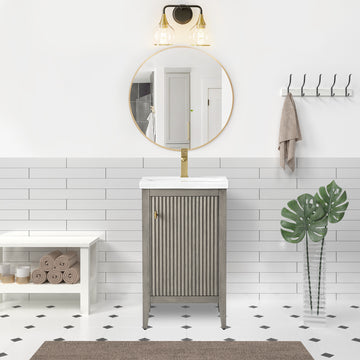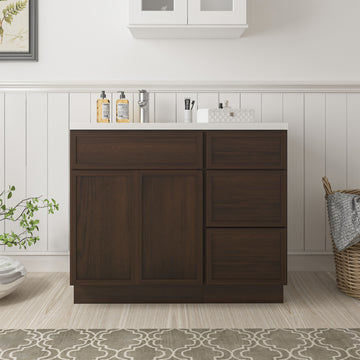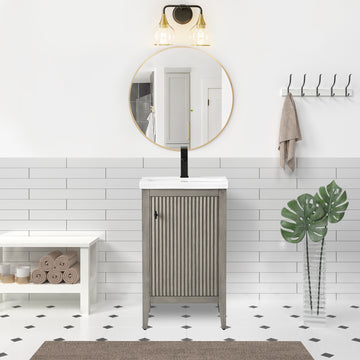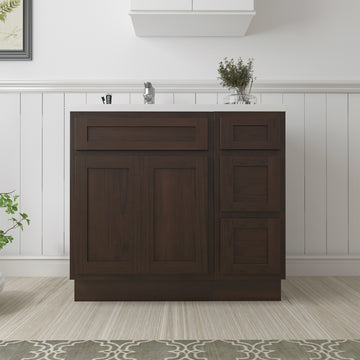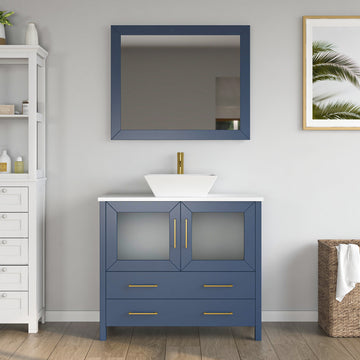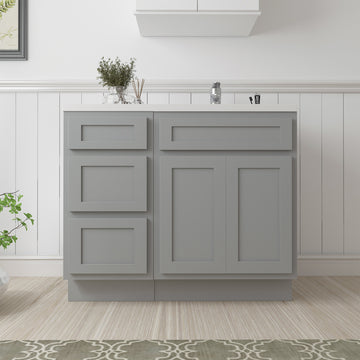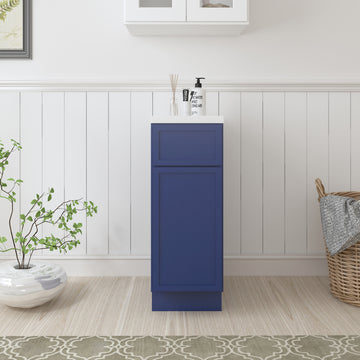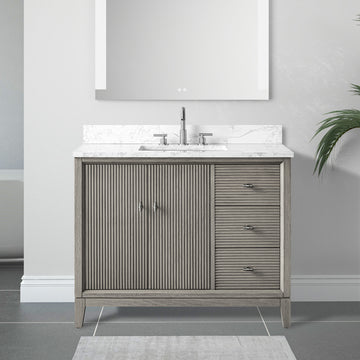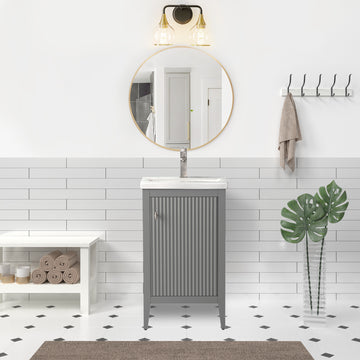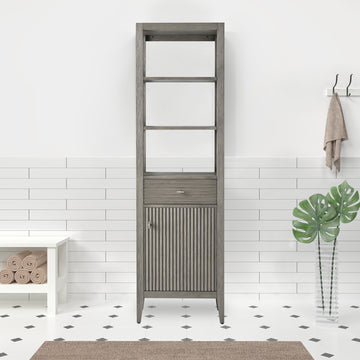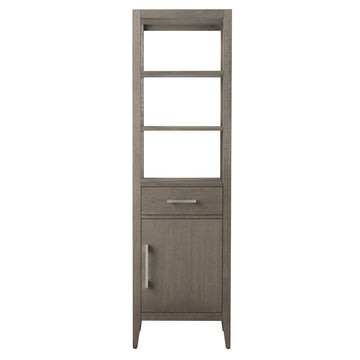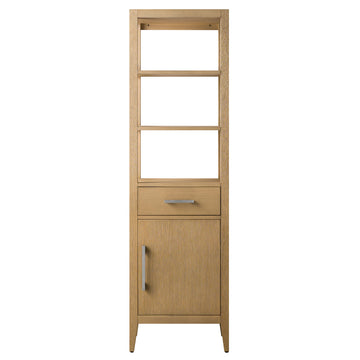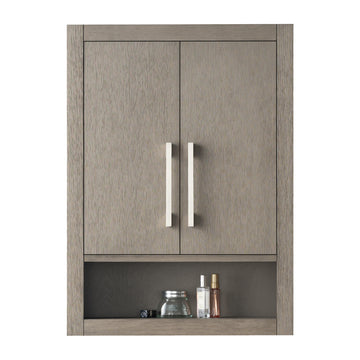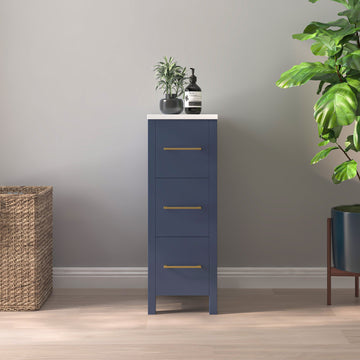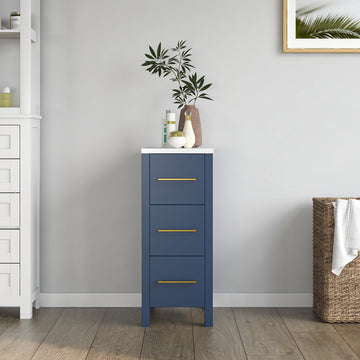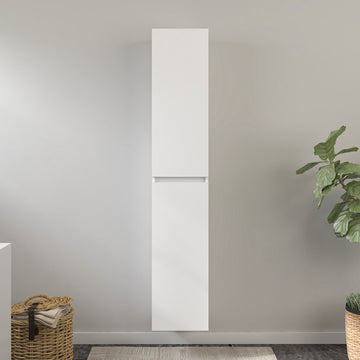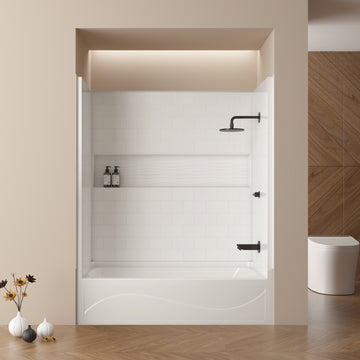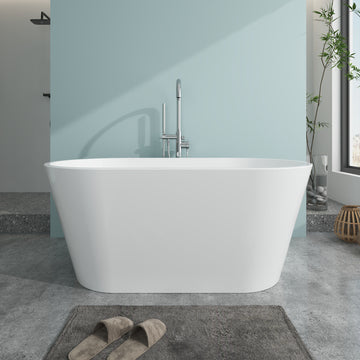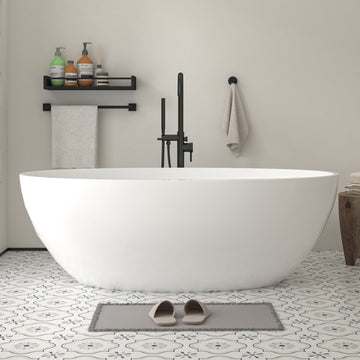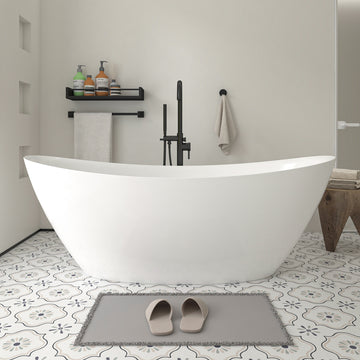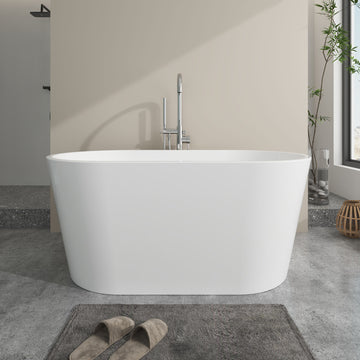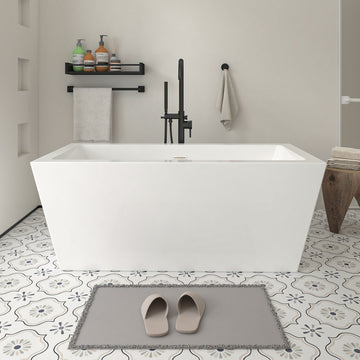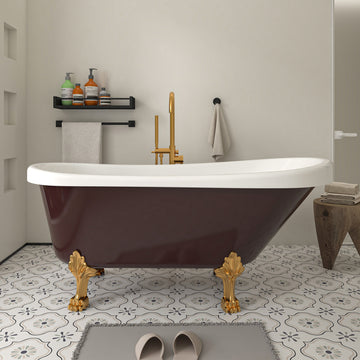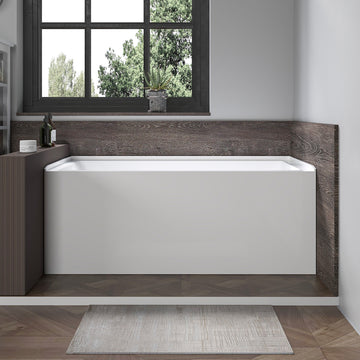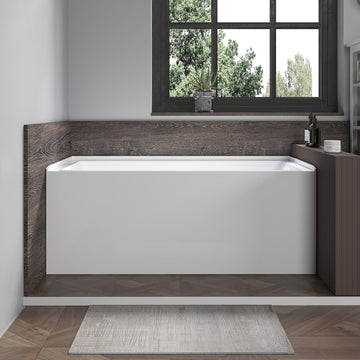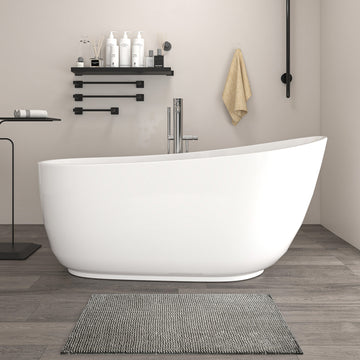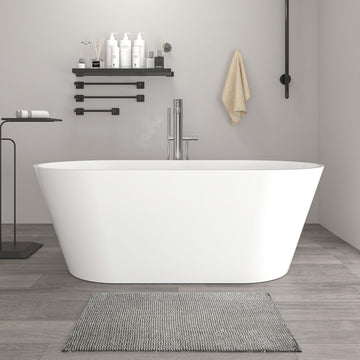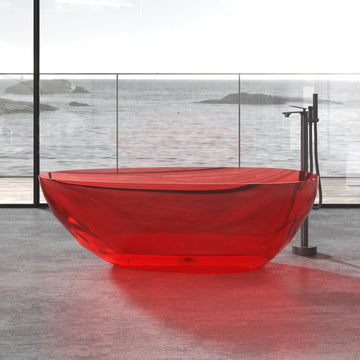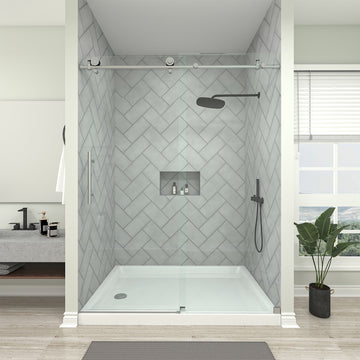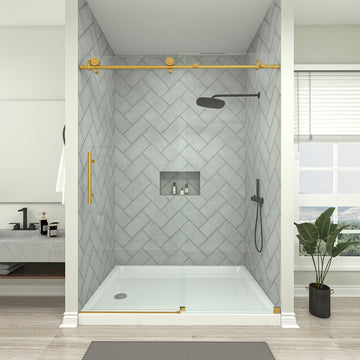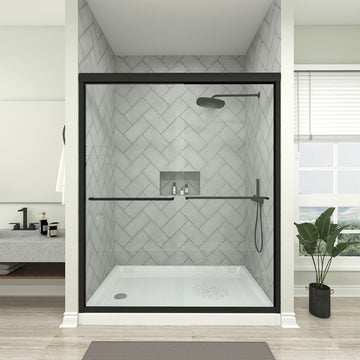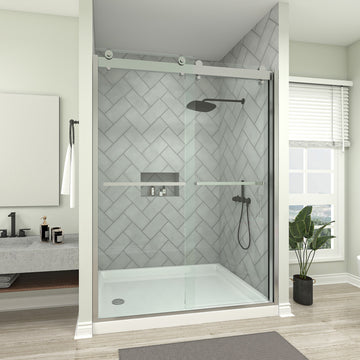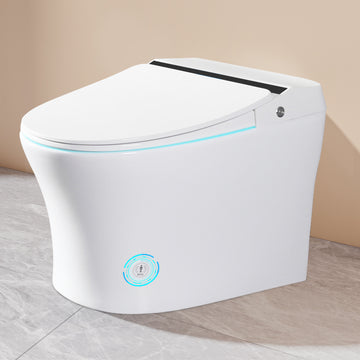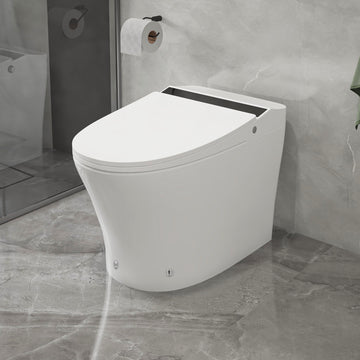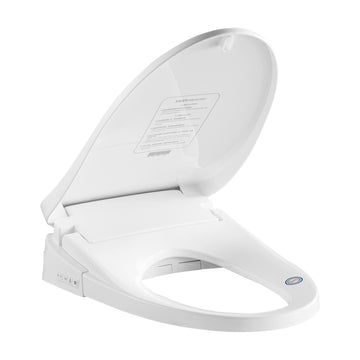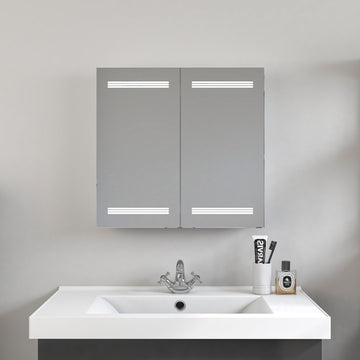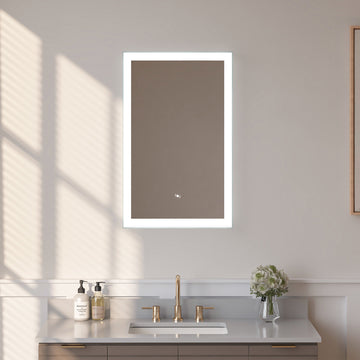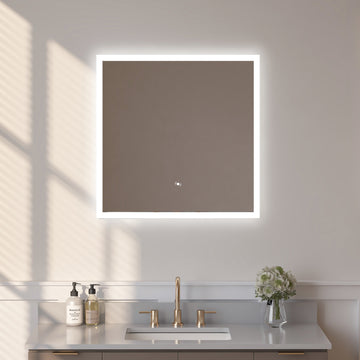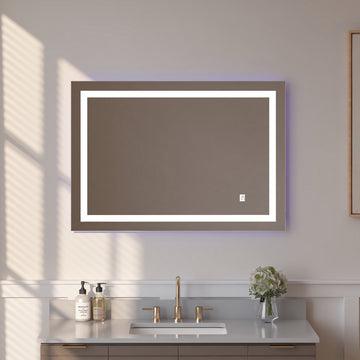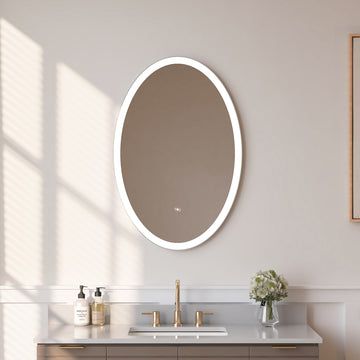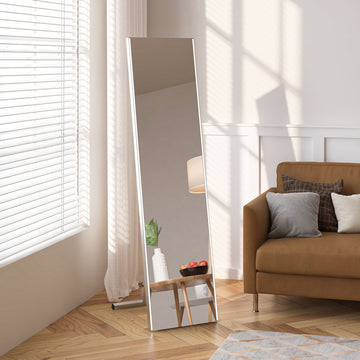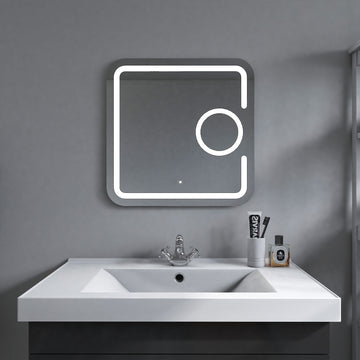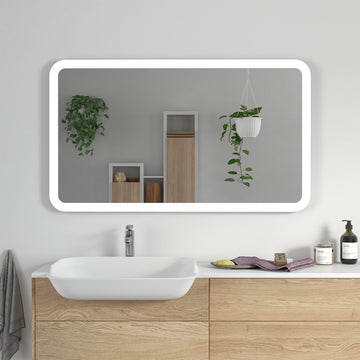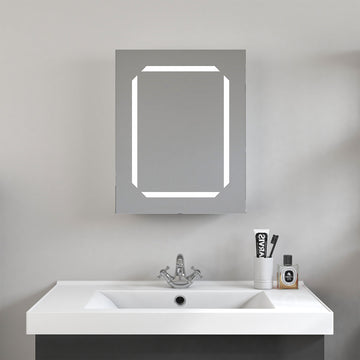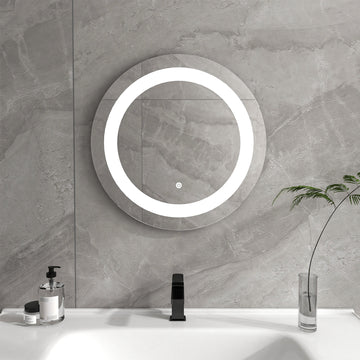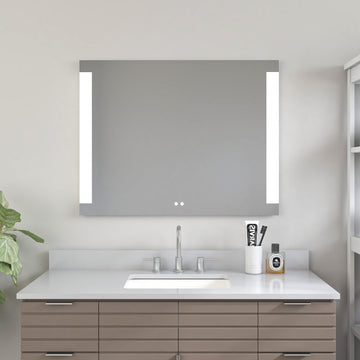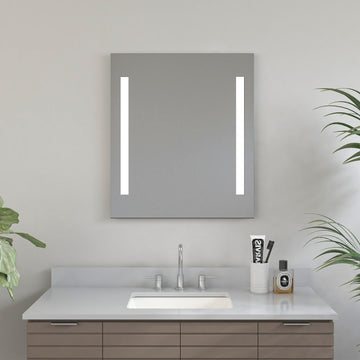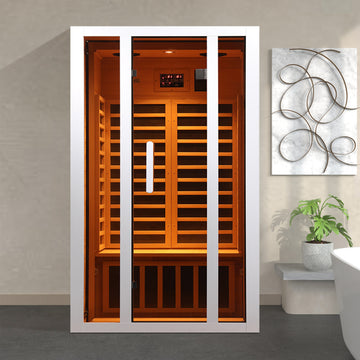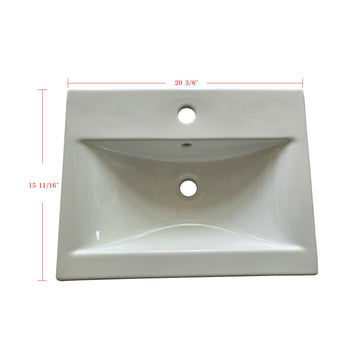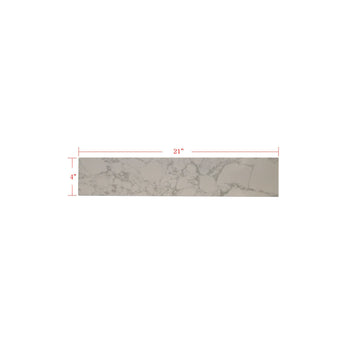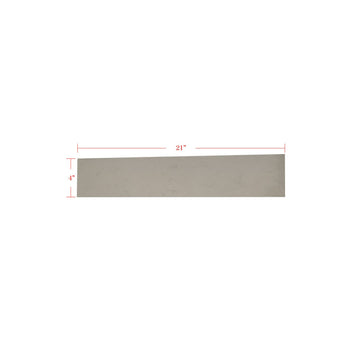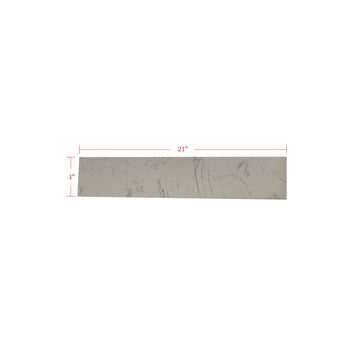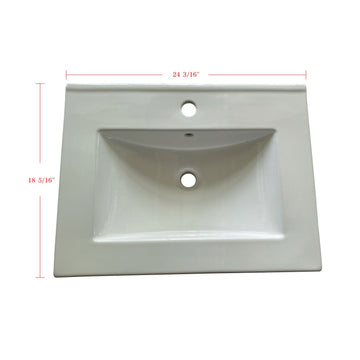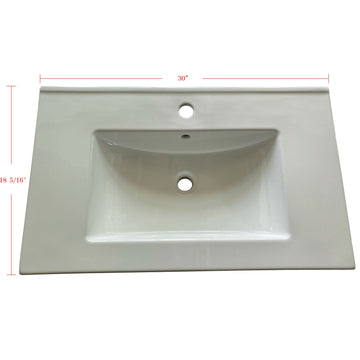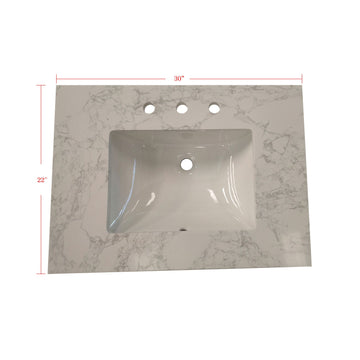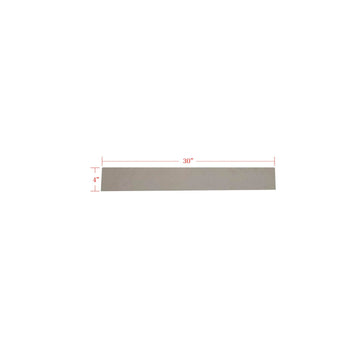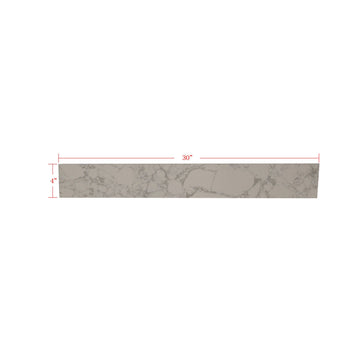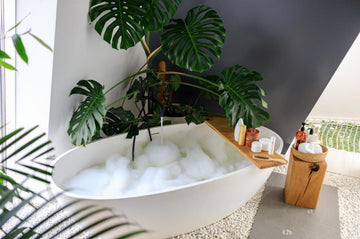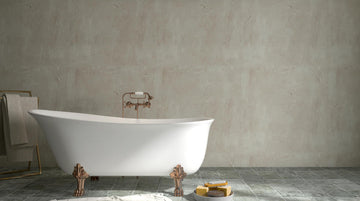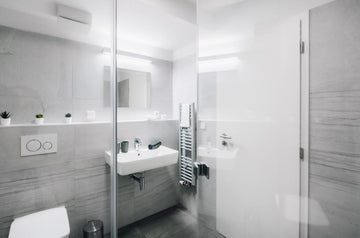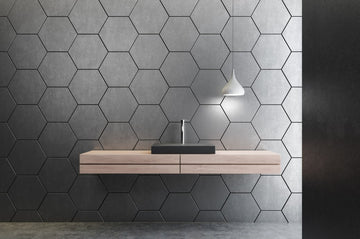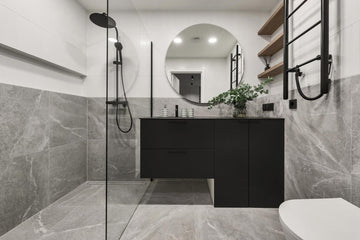Floating vanities are one of those design elements that instantly scream modern. Clean lines, no bulky base, and the illusion of extra space, what’s not to like? But like any trend that’s made its way from high-end spas to everyday bathrooms, floating vanities come with both perks and practical considerations.
Are they right for your space? In this guide, we’ll walk you through what floating vanities actually are, how they compare to freestanding options, and what to keep in mind when choosing or installing one. Whether you're team yay or still on the fence, you'll leave with a clearer sense of what works best for your bathroom.
What is a floating vanity?
A floating vanity is a bathroom cabinet mounted directly onto the wall. Leaving open space between the bottom of the unit and the floor. Unlike traditional freestanding vanities that rest on legs or base, floating vanities create a “floating” appearance.
Floating vanities offer practical advantages. Like easier floor cleaning, the illusion of more space (especially in compact bathrooms), and flexibility in height placement. Depending on the design, a floating vanity can come with drawers, open shelving, sinks, mirrors, or a backsplash. Some are sleek and minimal, while others pack in storage just as well as their floor-bound counterparts.
Because they attach directly to wall studs for support, floating vanities need to be properly anchored. Especially if you're choosing a heavier material or including a sink. That wall-mounting aspect is part of what makes them feel modern, but it also adds a few considerations during installation—which we’ll get into later.
How to choose a floating vanity
Choosing the right floating vanity goes beyond just picking a sleek design from a showroom catalog. It’s a blend of visual harmony, functional needs, and practical limitations like space, plumbing, and wall support. Here’s how to approach it thoughtfully, section by section.
Measure your space
Before anything else, take accurate measurements of your bathroom. Floating vanities come in a variety of widths. Common sizes include 24", 30", 36", 48", and 60 inches. But your choice should depend on how much wall space you have and how the vanity fits into the flow of the room.
Also consider height and depth. Floating vanities offer flexibility in mounting height, which is great if you're customizing for accessibility or personal comfort. The standard depth usually falls between 18" to 21", but you’ll want to make sure it doesn’t obstruct movement, especially in smaller bathrooms.
Pro tip: Don’t just measure where the vanity will go. Account for door swing, drawer clearance, and space around the toilet or shower. A sleek vanity that blocks your bathroom door from opening fully is not ideal.
Choose a size based on functionality
Ask yourself how the vanity will be used:
-
Is this a powder room or a master bath?
-
Will more than one person use it daily?
-
Do you need storage space for essentials or just a place for the sink?
For tight spaces or half-baths, a 24" or 30" vanity with minimal drawers might do the trick. For shared bathrooms, you might need a double-sink setup at 60" or more, or a wide single-sink vanity with generous storage options.
Storage configurations vary, some floating vanities offer deep drawers, open shelving, or a combination of both. Consider how much you need to hide away vs. display.
Sink or no sink?
You can purchase floating vanities with an integrated sink or as a vanity cabinet only, giving you flexibility to pair with your own countertop and sink.
-
Integrated sink vanities are convenient and easy to install. They typically feature seamless surfaces like ceramic or resin for easy cleaning.
-
Separate sink + counter setups allow for more personalization. You can go for vessel sinks, undermount styles, or unique materials like stone or glass.
Keep in mind that adding a sink affects weight distribution and plumbing access, so plan accordingly when it comes to mounting hardware and wall structure.
Material and weight considerations

A major factor for floating vanities is weight. Because they don’t rest on the floor, your wall must support the full load, including the vanity, sink, countertop, and anything you store inside.
Some popular material options include:
-
MDF or plywood with laminate finish – budget-friendly and lightweight
-
Solid wood – stylish and durable, but heavy
-
Veneer over engineered wood – a good middle-ground for weight and style
-
Stone tops (marble, quartz, granite) – elegant but very heavy; may need additional wall reinforcement
If your walls are drywall with no studs in the right place, installation could be trickier or require reinforcement.
Design & style options
Floating vanities come in a variety of styles, from minimalist white rectangles to rustic wood slabs with visible grain. Choose one that aligns with your bathroom’s overall design philosophy.
Things to consider:
-
Finish and color: Matte black, white gloss, natural oak, and walnut are popular choices.
-
Hardware style: Some have sleek push-to-open drawers, others use statement handles.
-
Storage configuration: Do you prefer drawers over open shelves? Are you okay bending down for storage, or do you want eye-level compartments?
Plumbing compatibility
This is a dealbreaker for some homes. Floating vanities may require wall-mounted plumbing or at least careful planning to hide exposed pipes. If your current setup uses floor-mounted plumbing, you may need to reroute it for a clean, floating look.
Always consult a plumber or contractor before purchasing to make sure your desired vanity fits the practical layout of your bathroom.
TL;DR – What to consider when choosing a floating vanity
-
Accurate width, height, and depth based on room size
-
Whether you need single or double sinks
-
How much storage space you require
-
Wall strength and how much weight the vanity will support
-
Material choice and water-resistance
-
Design match to your bathroom's aesthetic
-
Plumbing setup that won’t interfere with installation
Choosing a floating vanity is as much about planning as it is about style. Taking time to assess these elements helps ensure your vanity looks good and lasts and works as part of your daily bathroom routine.
Floating vanity vs freestanding vanity
When deciding between a floating vanity and a freestanding one, it’s not just about aesthetics. Each option has its strengths, and the better choice depends on your space, style preferences, and renovation goals. Here's how they compare across the areas that matter most:
Installation & support
-
Floating vanity: Mounted directly onto the wall, requiring strong anchors or studs to hold its weight, especially when paired with a stone countertop or a fully stocked drawer. Installation can be more complex, and may require wall reinforcement.
-
Freestanding vanity: Sits directly on the floor, much like a dresser. Easier to install and doesn't rely on wall support, making it ideal for older homes or quick upgrades.
If your walls can't handle extra weight or if you're looking for a simpler DIY installation, freestanding is easier. Floating vanities need more prep, but offer a clean, modern finish.
Space & visual impact
-
Floating vanity: Creates the illusion of more space by exposing the floor beneath. This can make small bathrooms feel more open and less cluttered. It's also easier to clean around and under.
-
Freestanding vanity: Provides a fuller, often more traditional look. Can appear bulky in smaller rooms but offers more storage in the lower section.
Floating wins in compact spaces or minimalist designs. Freestanding works well in larger bathrooms or classic interiors.
Storage capacity
-
Floating vanity: Typically offers less storage since it's elevated off the ground. Most models come with drawers or shallow cabinets rather than deep shelving.
-
Freestanding vanity: Usually features larger cabinets and more volume for storing towels, cleaning supplies, and bulky items.
For maximum storage, freestanding is the practical choice. For essential-only storage and sleek looks, floating is sufficient.
Design flexibility
-
Floating vanity: Often used in modern, minimalist, or Scandinavian-style bathrooms. Clean lines, wall-to-wall symmetry, and customization in mounting height add to its design appeal.
-
Freestanding vanity: Available in a wide range of styles, from antique and farmhouse to industrial and contemporary, with more variation in shape, feet, and detailing.
Floating offers a streamlined, high-end feel. Freestanding offers more variety and versatility in terms of traditional aesthetics.
Maintenance & cleaning
-
Floating vanity: Easier to clean underneath; no dust or water collects at the base. Great for people who want a tidy look and fewer hard-to-reach corners.
-
Freestanding vanity: May trap dust or water along the floor line, especially if installed over uneven tiles.
Floating vanities are more maintenance-friendly when it comes to cleaning floors.
Which one is right for you?
Choose a floating vanity if:
-
You’re working with a small or modern bathroom
-
You want easier floor cleaning
-
You’re okay with limited storage
-
You prefer a sleek, minimal look
Choose a freestanding vanity if:
-
You need maximum storage
-
You’re after a classic or rustic design
-
You want a simpler installation process
-
Your walls aren’t suited to support heavy furniture
Both styles have their place. It really depends on how much you value form, function, and flexibility in your bathroom layout.
Is a floating vanity right for you?
Floating vanities offer a practical, space-conscious solution that can elevate the look and feel of your bathroom. Whether you're drawn to their sleek, modern profile or intrigued by the added floor space and easier cleaning, they bring a distinct aesthetic with functional benefits.
That said, they’re not for every setup. Consider your storage needs, wall strength, bathroom size, and personal style preferences before deciding.
Whether you're going wall-mounted or sticking with a freestanding classic, the key is to choose a vanity that balances form and function in a way that works for your space.
